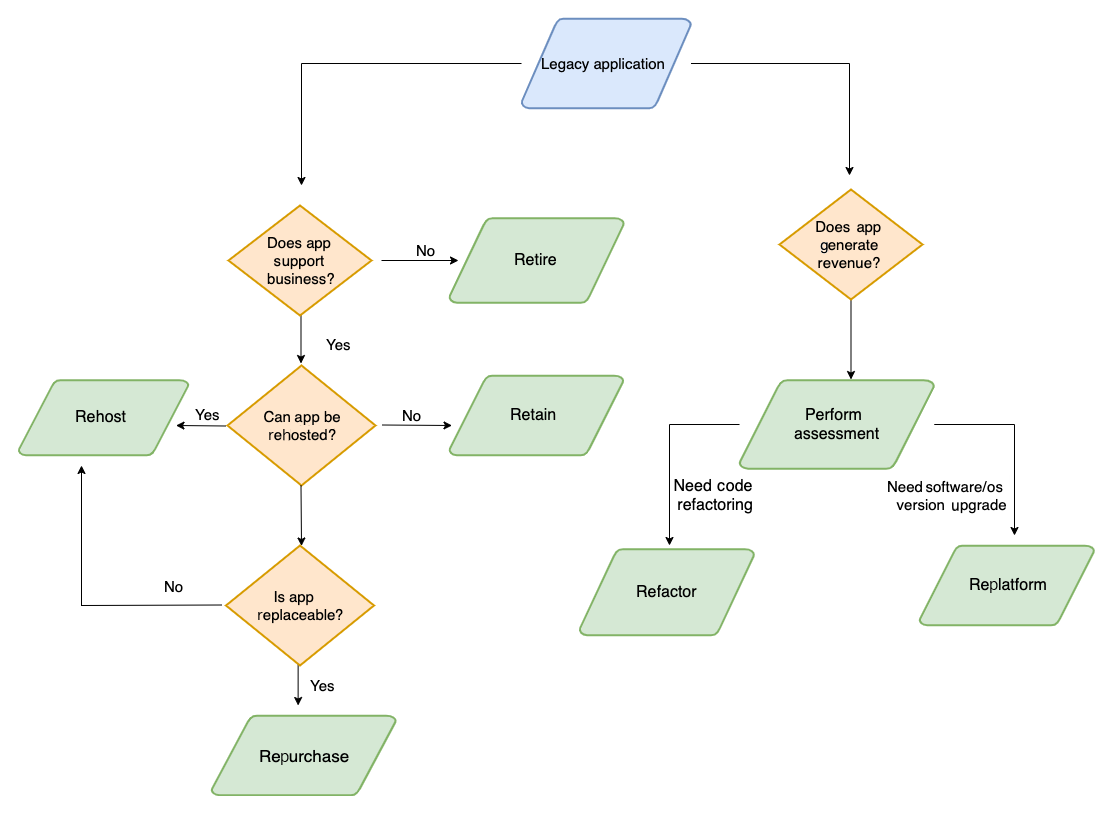As the cloud is becoming ever-more popular, more organizations are looking to migrate into the cloud for their legacy application modernization needs. You learned about various cloud migration techniques in Chapter 5, Cloud Migration and Hybrid Cloud Architecture Design. Cloud provides you with the flexibility to scale your application while keeping costs low and helps to achieve desirable performance, high availability, and reliability while maintaining application security.
Cloud providers such as Amazon Web Services (AWS) provide many options out of the box, which can help you to modernize your system. For example, you can take a serverless approach to build a microservice using the AWS Lambda function and Amazon API Gateway, using Amazon DynamoDB as a backend. We discussed various legacy system modernization techniques in the previous section, as well as all of the applications in the context of moving to the cloud. The flow illustrated in the following diagram will help you decide whether to use cloud migration to modernize your legacy application:

As shown in the preceding diagram, if your application is still heavily used by businesses and is generating revenue, you may want to continue with minimal changes. In that situation, you can refactor your application into the cloud or you can re-platform it into the cloud if the server is going EOL.
In case you don't want to make any changes in existing applications to sustain business, and still want to move to the cloud entirely to save and optimize costs, then take the lift and shift approach to rehost the legacy application in the cloud. If your legacy application is replaceable, then you can buy a cloud-native SaaS version of the product and retire your legacy application. Sometimes, you may want to retain your legacy system in the on-premises data center if there are too many business dependencies and it cannot move into the cloud due to incompatibility.
You should perform a total cost of ownership (TCO) analysis to understand the advantages of moving to the cloud. It is recommended to take the most complex module of the legacy application and build a POC to make sure your entire system will be cloud-compatible before starting the full project. A detailed POC that covers the critical business cases will help you to identify any gaps and reduce migration risk significantly.
